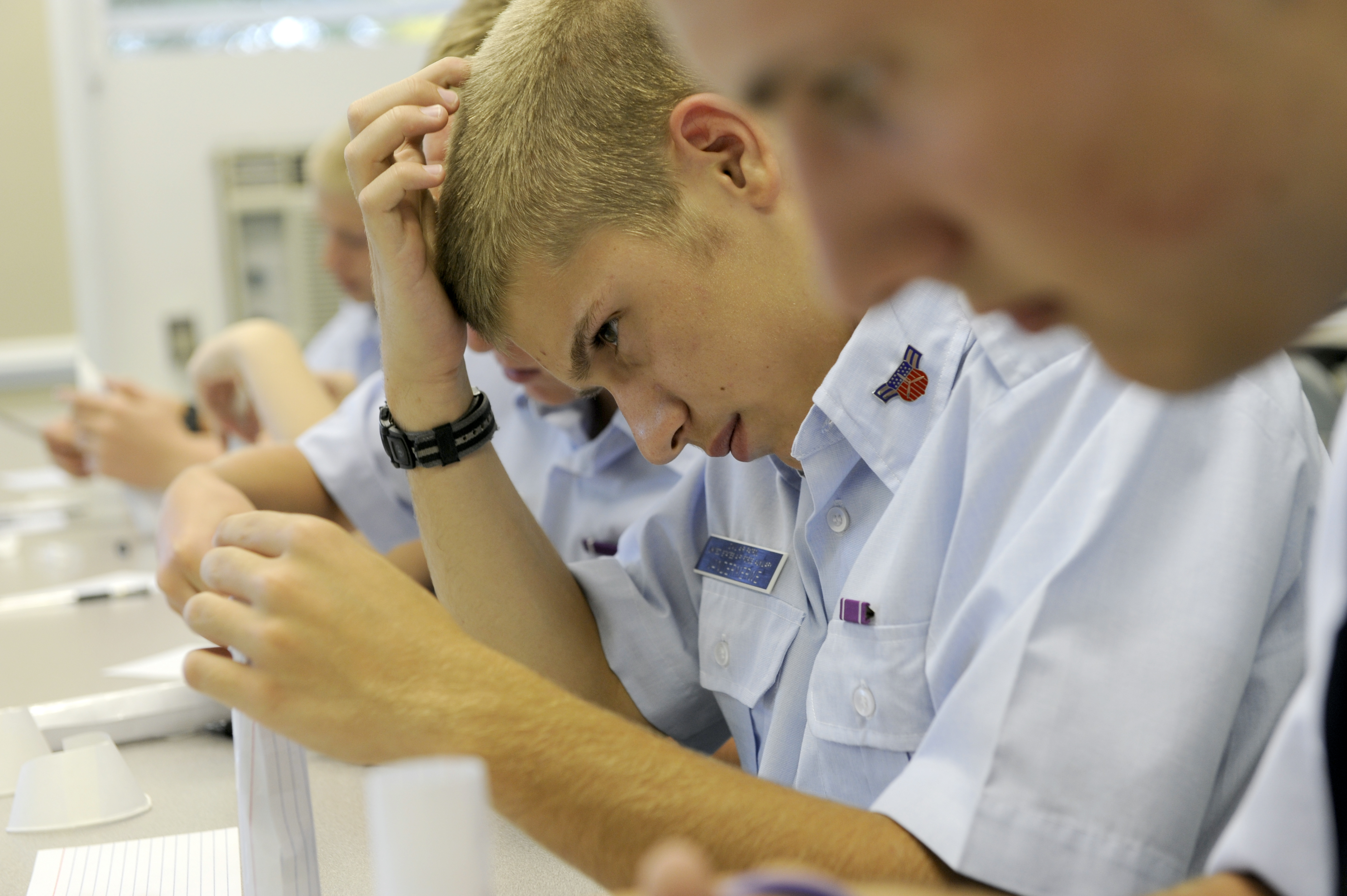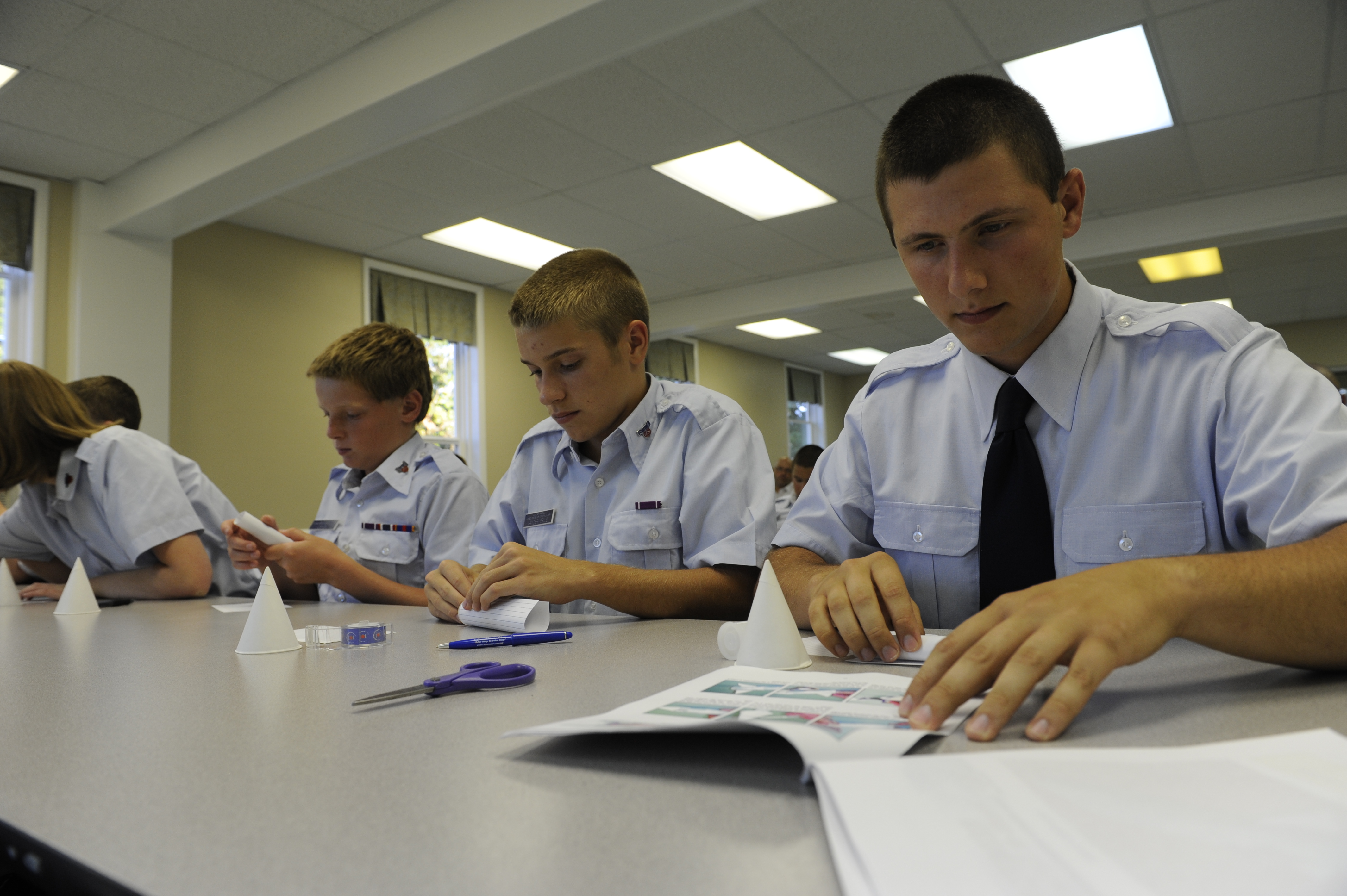 Civil Air Patrol cadet James Vandermerwe leans his head in his hands while building a "fizzy flier" rocket as part of the introduction to aerospace education at the Brainerd Hills Presbyterian Church. Cadets from ages 12 to 20 were to read about the history of rocketry. Afterward cadets built several basic models of rockets.
Civil Air Patrol cadet James Vandermerwe leans his head in his hands while building a "fizzy flier" rocket as part of the introduction to aerospace education at the Brainerd Hills Presbyterian Church. Cadets from ages 12 to 20 were to read about the history of rocketry. Afterward cadets built several basic models of rockets.CIVIL AIR PATROLCivil Air Patrol is a nonprofit, all-volunteer auxiliary of the U.S. Air Force. There are 52 wings, which consist of 1,500 squadrons covering the United States and Puerto Rico. More than 60,000 volunteer cadets and adult members serve nationwide.Civil Air Patrol was founded on Dec. 1, 1941, during World War II to allow private pilots to use their aircraft and flying skills in civil defense.For more information about the local Civil Air Patrol program, see www.chattanoogaCAP.com.
Folded pieces of taped-together notebook paper are the materials Journee Martin used to build her rocket in a church room this week. Alka-Seltzer should make the "fizzy flier" soar, at least a few feet.
Once she finishes the paper rocket, the 15-year-old Civil Air Patrol cadet tech sergeant must build a foam, finned rocket that slingshots through the air by way of a long rubber band.
Then come the fueled rockets that blast hundreds of feet into the air.
She and 20 other cadets learn the basics of rocketry before launching one- and two-stage rockets as part of their aerospace education with the Civil Air Patrol.
The patrol is a U.S. Air Force Auxiliary program designed for both adult and youth volunteers to assist in search and rescue operations and, once qualified, aerial search operations.
"We rolled up a piece of paper like this," she points to the finished paper rocket and the empty, plastic 35mm film canister inside.
"Just tape it up around there, and then we're going to take a cap, which is very stylish," she laughed.
Once Martin and the other cadets finish all three phases of Civil Air Patrol's rocketry teaching, they'll have a shiny rocketry pin to place on their blue, Air Force-influenced uniforms. The fueled rocket launch will come at a future date.
 Civil Air Patrol cadets Riley Blanton, right, James Vandermerwe, middle, and John O'Shea begin building "fizzy flyer" rocket during their weekly meeting Tuesday evening at the Brainerd Hills Presbyterian Church. As part of aerospace education, cadets were first to read up on the history of rocketry and then build rockets.
Civil Air Patrol cadets Riley Blanton, right, James Vandermerwe, middle, and John O'Shea begin building "fizzy flyer" rocket during their weekly meeting Tuesday evening at the Brainerd Hills Presbyterian Church. As part of aerospace education, cadets were first to read up on the history of rocketry and then build rockets.Larry Stewart, 55, came back to Civil Air Patrol about a year ago. He served as a cadet when he was much younger.
Stewart helped with aerial reconnaissance following the spring tornado that hit Apison. Both the air and ground components of the Civil Air Patrol serve in natural disasters and plane crashes, he said. Those in the air conduct wide-ranging searches to help ground crews narrow down areas and find what the group seeks, he said.
On Tuesday, Cadet Airman Basic Blaine Dufrene, 16, flitted from table to table, helping other cadets with their rocket-building.
"Make sure the bottom of the sticker is lined up with the bottom of the barrel," Dufrene instructed both Cadet Chief Master Sgt. Riley Blanton, 20, and Cadet Senior Master Sgt. Ryan Garvey, 16.
Blanton said the goal is for cadets to understand the basics of propulsion, which will help them with future flight training if they decide to pursue those qualifications.
Though much of this week's session was classroom-based and involved rocketry history quizzes and model building, cadets also can attend mini "boot camps" to learn outdoor search techniques, all in a military-like atmosphere.
Stewart said some of the cadets join ROTC programs or use the Civil Air Patrol experience as a way to test out possible military careers, but many volunteer to learn more about flying help if there's an emergency, as he did.
